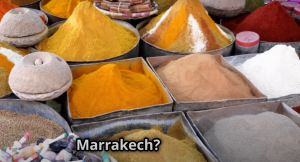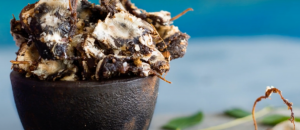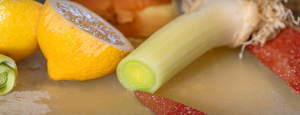Alternative recipe books break from traditional culinary norms, offering an exciting range of dishes that challenge standard ingredients, cooking methods, or cultural expectations. These cookbooks often explore niche diets—like paleo, vegan, raw, or keto—but they also delve into global cuisines, foraging, fermentation, edible insects, and ancient grains, creating a platform for culinary creativity and experimentation.
Sustainability & Wellness
 Readers can expect to find recipes that prioritize sustainability, wellness, and seasonality, as well as those that celebrate regional specialties or revive forgotten cooking techniques. Instead of conventional beef stews or pasta bakes, an alternative cookbook might feature jackfruit tacos as a plant-based pulled pork substitute, or grilled cactus paddles served with lime and chili. In addition to spotlighting local, organic, or lesser-known produce, these books often include instructions for fermenting vegetables, brewing kombucha, making nut cheeses, or creating hearty meals without relying on processed ingredients.
Readers can expect to find recipes that prioritize sustainability, wellness, and seasonality, as well as those that celebrate regional specialties or revive forgotten cooking techniques. Instead of conventional beef stews or pasta bakes, an alternative cookbook might feature jackfruit tacos as a plant-based pulled pork substitute, or grilled cactus paddles served with lime and chili. In addition to spotlighting local, organic, or lesser-known produce, these books often include instructions for fermenting vegetables, brewing kombucha, making nut cheeses, or creating hearty meals without relying on processed ingredients.
Don’t Be Scared To Try Exotic Ingredients
 Cooking with exotic foods is a recurring theme, and it introduces adventurous eaters to new textures, flavors, and preparation styles. Ingredients like sea urchin roe, durian, fermented tofu, or wild mushrooms such as lion’s mane appear frequently in these books, pushing the boundaries of conventional palates. One such exotic ingredient, the razor clam, offers a fascinating case study in both taste and texture. Native to sandy coastal shores and prized in various Asian and European cuisines, razor clams taste have a delicate, slightly sweet flavor with briny undertones reminiscent of the ocean. Their texture is firmer than that of traditional clams, with a satisfying chew that stands up well to quick stir-frying, grilling, or light steaming. When cooked properly—often with garlic, white wine, and fresh herbs—their natural umami sings, making them a standout choice in any seafood dish. Razor clams are also excellent in ceviche or tossed with chili oil and soy sauce for a punchy appetizer.
Cooking with exotic foods is a recurring theme, and it introduces adventurous eaters to new textures, flavors, and preparation styles. Ingredients like sea urchin roe, durian, fermented tofu, or wild mushrooms such as lion’s mane appear frequently in these books, pushing the boundaries of conventional palates. One such exotic ingredient, the razor clam, offers a fascinating case study in both taste and texture. Native to sandy coastal shores and prized in various Asian and European cuisines, razor clams taste have a delicate, slightly sweet flavor with briny undertones reminiscent of the ocean. Their texture is firmer than that of traditional clams, with a satisfying chew that stands up well to quick stir-frying, grilling, or light steaming. When cooked properly—often with garlic, white wine, and fresh herbs—their natural umami sings, making them a standout choice in any seafood dish. Razor clams are also excellent in ceviche or tossed with chili oil and soy sauce for a punchy appetizer.
Pairing Is Key
 For those exploring alternative recipe books, these clams might appear alongside seaweed salads, kelp noodles, or even fermented fish sauces, offering a window into how traditional coastal communities have sustainably utilized local resources. What makes cooking with exotic ingredients like razor clams especially rewarding is not just the novel flavors, but also the connection to unfamiliar cultures and ecosystems. Alternative cookbooks don’t just change what’s on the plate—they shift perspectives, encouraging cooks to view food as a dynamic, evolving reflection of place, health, and identity. Whether it’s experimenting with roasted crickets for protein, learning how to cook breadfruit, or crafting a meal entirely from foraged herbs and wild greens, these books empower readers to think creatively and eat more mindfully. They are not just cookbooks, but manifestos for conscious consumption and culinary adventure, providing inspiration to cook with curiosity and intention.
For those exploring alternative recipe books, these clams might appear alongside seaweed salads, kelp noodles, or even fermented fish sauces, offering a window into how traditional coastal communities have sustainably utilized local resources. What makes cooking with exotic ingredients like razor clams especially rewarding is not just the novel flavors, but also the connection to unfamiliar cultures and ecosystems. Alternative cookbooks don’t just change what’s on the plate—they shift perspectives, encouraging cooks to view food as a dynamic, evolving reflection of place, health, and identity. Whether it’s experimenting with roasted crickets for protein, learning how to cook breadfruit, or crafting a meal entirely from foraged herbs and wild greens, these books empower readers to think creatively and eat more mindfully. They are not just cookbooks, but manifestos for conscious consumption and culinary adventure, providing inspiration to cook with curiosity and intention.
Alternative Recipe Books Give Inspirational Ideas
2025-04-21 by Lin Berch • Uncategorized •
Alternative recipe books break from traditional culinary norms, offering an exciting range of dishes that challenge standard ingredients, cooking methods, or cultural expectations. These cookbooks often explore niche diets—like paleo, vegan, raw, or keto—but they also delve into global cuisines, foraging, fermentation, edible insects, and ancient grains, creating a platform for culinary creativity and experimentation.
Sustainability & Wellness
Don’t Be Scared To Try Exotic Ingredients
Pairing Is Key